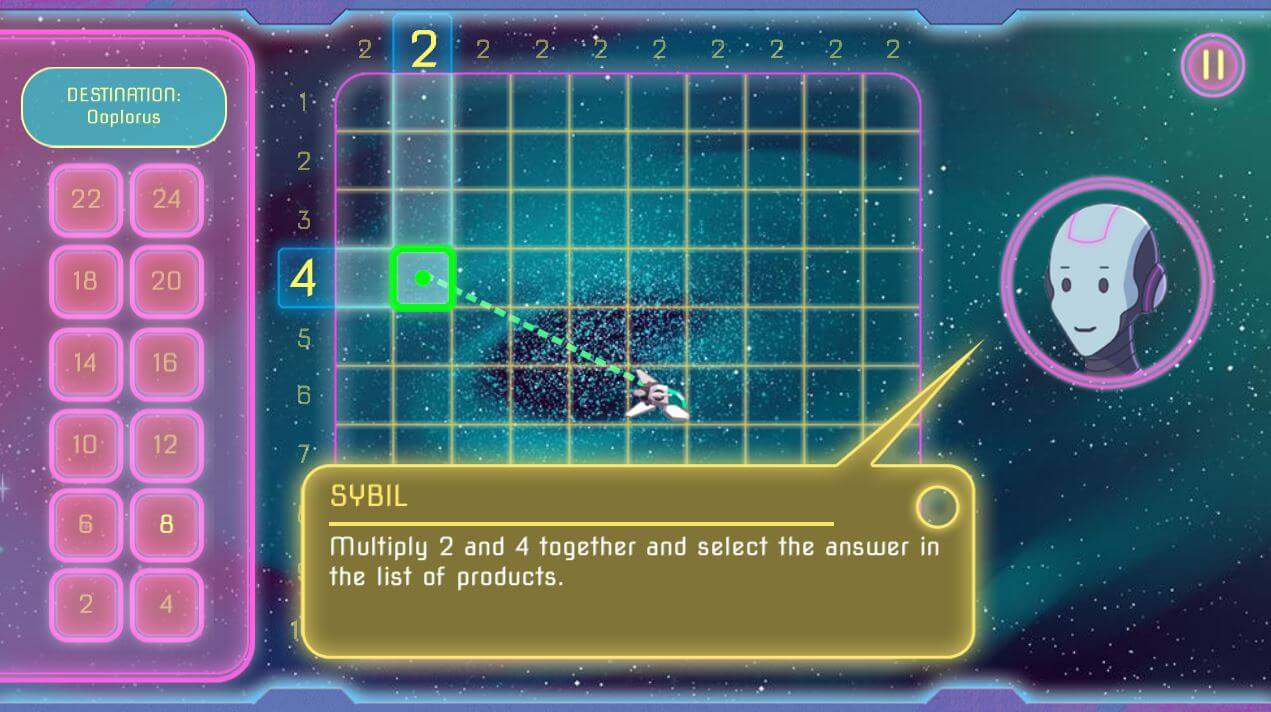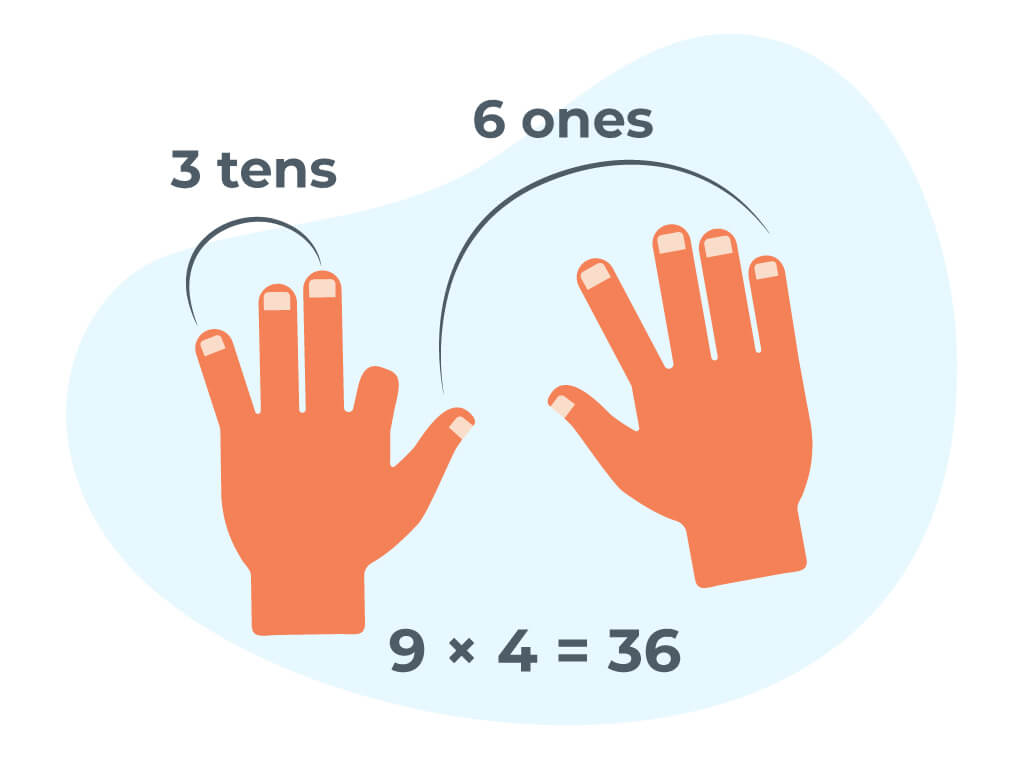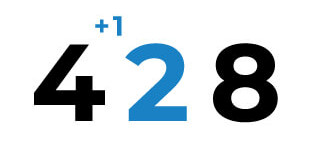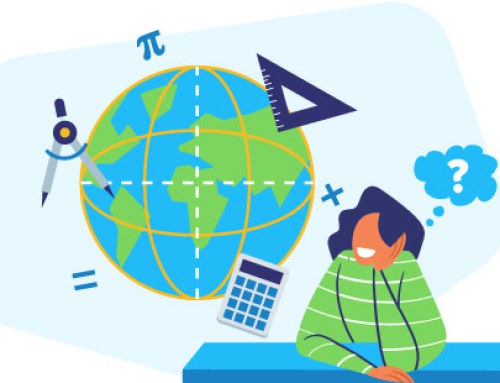While mathematics comes naturally to some kids and parents, others might be quick to convince themselves the subject wasn’t for them.
Do you have children who think the subject is boring? Here’s a solution.
Instead of just learning multiplication by heart, show them how they can be mathematicians by teaching them these nifty multiplication tricks.
Read to the end for two more bonus tricks!
Warm-up Exercise
Get your child to throw a dice and make them double it quickly. Then throw it again and halve the number.
Want an extra challenge? You can extend this by using two dice.
Or you can take it a notch up by throwing in a double and +1 or double and -1.
To do this, use a dice and two cards, a red Ace for -1 and a black Ace for +1.
Trick #1: The × 4 double double
To remember the answers to a 4 times tables, it’s simply a double double.
First you double the number it’s multiplied by. Then double that answer.
Let’s try it out!
4 × 3 = double 3 to get 6. Then double 6 to get the answer 12.
4 × 8 = double 8 to get 16. Then double 16 to get the answer 32.
Once your child has learnt this trick, extend their learning with the 8 times tables, which is double double double.
Or to make it funny so that it sticks, call them turkeys because if you say it fast it sounds like… gobble gobble gobble.
So 8 × 7 = double 7 to get 14. Then double 14 to get 28 and double 28 to get 56.
To break down the double of 28 you can do this: 20 + 20 = 40, 8 + 8 = 16, then 40 + 16 = 56
Trick #2: The × 5’s Trick
Here’s a handy trick to use the 5 times table, especially when the digit gets bigger.
Teach children to multiply the number by 10, and then halve it. For example:
15 × 5 =
15 x 10 = 150
Then halve 150 = 75
23 × 5 =
23 × 10 = 230
Then halve 230 = 115
A Fun Multiplication Game For Children

Multiverse is an online multiplication game in Mathletics where your child takes on the role of space traders exploring new worlds!
Watch them put their multiplication skills to the test as they scan asteroids, harvest minerals, plot coordinates and defeat space pirates.
Get access to Multiverse when you sign up for a free Mathletics home trial. Or if you’re a teacher, sign up for a free school trial here.
Trick #3: The × 6 Hack
Did you know that if you multiply 6 by an even number, the answer will end with the same even digit?
And the number in the tens place will be half of the number in the ones place.
However, this hack only applies to a single digit – when multiplying 6 by 2, 4, 6 and 8.
For example:
6 × 2 = 12
6 × 4 = 24
6 × 6 = 3strong>6
6 × 8 = 48
Trick #4: The × 9 Finger Trick
Hands up if you learned this multiplication finger trick in school!
Place both hands in front of them with their fingers and thumbs extended.
To multiply 9 by a number, count from the left and fold down that number finger.
For example, to multiply 9 by 4, fold down your fourth finger from the left like this:

Count the remaining extended fingers on either side of the “fold” to get the answer.
Explain to your child that the number of fingers on the left is the number of tens. And the number of fingers on the right is the number of ones.
In this case, there are 3 tens (30) on the left, and 6 ones (6) on the right, so the answer is 36. Easy peasy!
Though this trick is limited, (the furthest you can go is 9 × 9), it’s still a useful one to know.
Trick #5: The × 11 Strategy
Now that you’ve taught your class or child the 9 × trick, let’s move to slightly bigger numbers.
This is a quick way to multiply two-digit numbers by 11 in your head.
Step 1: Separate the two digits in your mind.
For example, if the number you’re thinking of is 23. Separate the 2 and the 3 like this:
2 [_] 3
Step 2: Add the two digits together
2 + 3 = 5
Step 3: Place the answer between the two digits in Step 1.
Place the digit 5 between 2 [_] 3, and there you have it! The answer to 23 × 11 is 253!
But what if the number from Step 2 is greater than 9?
Simply put the ones digit in the space and regroup the tens digit over.
For example, the number you want to multiply by 11 is 48.
First, separate the first and last digit with a space:
4 [_] 8
But since 4 + 8 = 12, put 2 in the space between 4 and 8, then add 1 to the number on the left (4) to get 5.

And that’s how you get the answer 528.
Once your child has mastered this trick, challenge them to try multiplying with bigger digits, such as 245 × 11 or 249 × 11.
Remember to always work right to left to avoid having to cross digits out.
For example: 245 × 11
First, separate the first and last digit with a space:
2 [__] 5
Start from the right and add the digit on the immediate left.
5 + 4 = 9 then 4 + 2 = 6
2 6 9 5
Let’s try a trickier three-digit number: 249 × 11
First, separate the first and last digit with a space:
2 [__] 9
Let’s add the numbers in between, by starting from the right and adding the digit on the immediate left.
9 + 4 = 13, so put down 3 and regroup 1, 4 + 2 = 6 plus the 1 = 7

This gives us the answer 2739.
Bonus Trick #6: It’s Always 2
Here’s a mathematics trick children would love!
Show them how they can ‘perform magic’ on any number so that it always becomes 2 at the end.
First, write the number 2 on a piece of paper and seal it in an envelope.
Ask your child to think of any number.
Once they’ve thought of a number, simply perform a few maths calculations and open the envelope to reveal the answer!
The trick is easy – simply follow these five steps:
- Ask your child to think of any number
- Multiply the number by 3
- Add 6
- Divide by 3
- Subtract the number from Step 1 from the answer in Step 4
And the answer will always be 2.
Let’s test it out. Say the number your child comes up with is 10.
10 × 3 = 30
30 + 6 = 36
36 ÷ 3 = 12
12 – 10 = 2
Get them to try it with other numbers and see their reactions.
Bonus Trick #7: It’s always 37
Here’s another trick where the answer is always 37.
Get your child to think of any three-digit number in which each of the digits is the same.
For example, let’s say the number they picked is 888.
Step 1: Add up the digits.
8 + 8 + 8 = 24
Step 2: Divide the three-digit number by the answer in Step 1.
888 ÷ 24 = 37
Try it with other same three-digit numbers.
To get children thinking, ask them, “Why do you think this works?”
Mental Mathematics Tricks
These multiplication and mental math(s) tricks not only make it interesting, but it also allows children to learn how to solve mathematical problems and operations in a different manner.
Once they’ve mastered these tricks, encourage children to try them with friends and adults to boost their confidence.
Looking for more fun and exciting ways to get your child engaged in math(s)?
Mathletics has a range of games and activities to make fluency and math(s) fun for kids!
Here’s how you can get the most out of a Mathletics home free trial.







